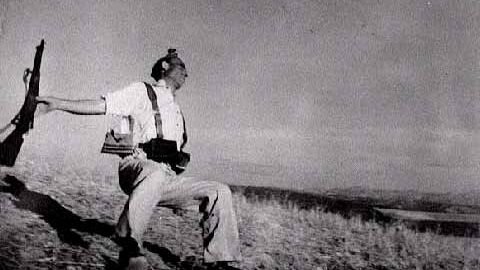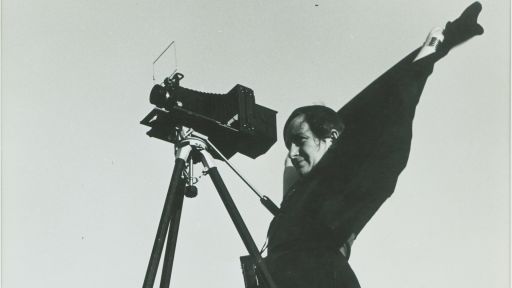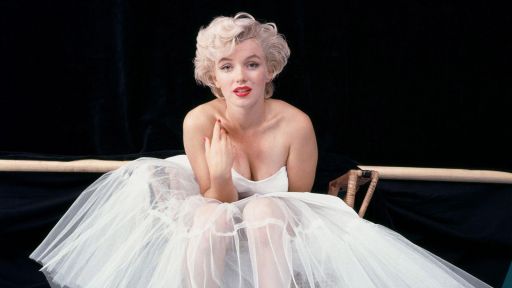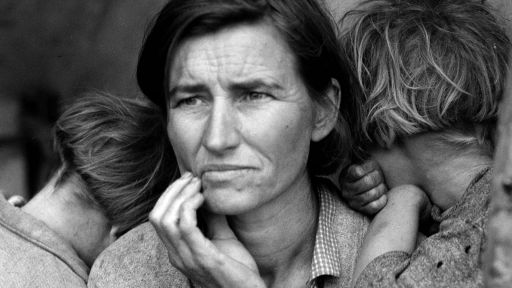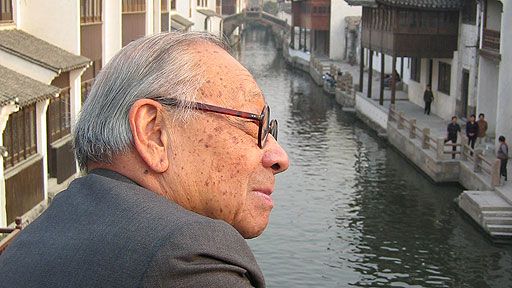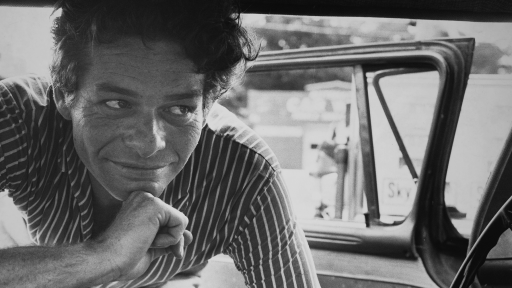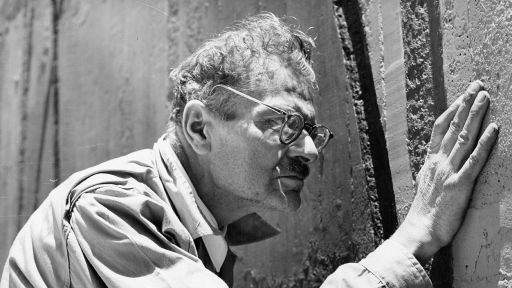Oct. 22, Endre Friedmann (a.k.a Robert Capa) is born in Budapest, Hungary to Deszo Friedmann and Julianna Henrietta Berkovitz.
Becomes close friends with Eva Besnyö, his upstairs neighbor in Budapest. She later becomes a photographer.
As a result of the American stock market crash, the Friedmanns suffer economically and are forced to open up all the bedrooms as workrooms. They resort to sleeping in one room, except Capa, who sleeps naked on a lounge in the salon.
Violent left-wing demonstration to protest unemployment. Capa, age 17, fights alongside fellow students against the police. That night, secret police arrest him for "conspiring with the Communist party." He is beaten and spends the night in jail.
Moves to Berlin and hooks up with Eva Besnyö, who has her own darkroom and sells her photos through a leftist agency. Begins work as a darkroom assistant/errand boy at Berlin's prestigious photo agency, Dephot.
Berlin is paralyzed by street fighting between the Social Democrats, the Nazis and the Communists. Capa gets his first big break and is sent to Copenhagen to take photos of Leon Trotsky giving a speech to Danish students. The pictures are featured in a full-page layout in Der Welt Spiegel.
Moves to Vienna and works as an assistant to Fritz Goro, assistant to the director of the Munchner Illustrierte Presse. Moves to Paris, pawns his camera from time to time, hangs out at the cafes at Montparnasse, meets David Seymour ("Chim") and Henri Cartier-Bresson.
Gets a job with Hug Block and is among the first to use the Leica camera professionally. On assignment for a Swiss firm, Capa meets Gerda Taro, who is involved in leftist politics.
Capa and Taro move in together in a one-room apartment near the Eiffel Tower. Gets a job as a picture editor for the Paris office of a Japanese monthly.
Starts to work regularly for the Alliance photo agency. Invents a new identity for himself, a 'highly successful American photographer' named Robert Capa, in order to showcase his work to editors. Capa and Taro begin coverage of the Spanish Civil War.
Leaves for Paris, leaving Taro behind in Spain. Capa and Taro are together at the Navacerrada Pass, near Segovia to cover the abortive loyalist offensive. Taro is killed by an out-of-control loyalist tank. In Paris, Capa reads about her death in L'Humanite. She is 25. Goes to New York and gets contract with Life.
First major story appears in Life. Photos of Chiang Kai-shek's Supreme War Council widely published. In Spain, Capa takes some of his most dramatic front-line photographs of the war. Picture Post devotes 11 pages to Capa's photos and declares the 23-year-old "The Greatest War-Photographer in the World."
Capa, along with 400,000 men, women and children who would eventually cross the border, leaves Spain for the last time. With the outbreak of war in Europe, Capa sails to New York.
U.S. immigration officials refuse to extend Capa's visa. Life sends him to Mexico on assignment. Covers Trotsky's cremation for Time. Immigration papers come through and he becomes a permanent United States resident.
Works on the book The Battle of Waterloo Road. Photos focus on the Gibbs family, who were portrayed in Capa's book The Battle of Waterloo Road, and how they cope with the Blitz.
Becomes a war photographer for Colliers. Travels around Europe photographing both soldiers and civilians.
Capa is the only press photographer to go in with the first wave of infantry to hit Omaha Beach on D-Day. Life office assigns Capa to remain in Paris. Photographs Picasso. Photographs the Battle of the Bulge.
Joins the 2nd Infantry Division as it fights its way across the Zeppelin Bridge. Meets Ingrid Bergman in Paris. It is the beginning of their two-year love affair. Follows Bergman to Hollywood. Alfred Hitchcock bases the film Rear Window on their affair.
International Pictures hires Capa as a writer and apprentice director/producer for $400 a week to write his war memoirs as the basis for a screenplay.
Founds photo agency Magnum with Henri Cartier-Bresson, William Vandivert, George Rodger, and David Seymour ("Chim"). The photographers each take a part of the world to cover. Capa is to roam at large. Slightly Out of Focus, his autobiography, is published to favorable reviews.
Travels with Time magazine reporter Frank Scherschel and Hungarian-born photographer Paul Goldman to the northern Negev desert to cover what he later called "the bitterest and most romantic fight of the whole war."
Back in New York, meets Jemmy Hammond. Their romance lasts until his death.
Returns to Israel to make a fund-raising film for United Jewish Appeal on the arrival, internment and eventual settlement of immigrants.
Loses his passport in a McCarthy sweep and pays thousands of legal fees to get it back. He refers to 1953, plagued by back problems and legal woes, as his "black year."
Arrives in Hanoi to cover the French Indochina war. May 25. On assignment for Life, steps on a mine crossing a paddy field and is killed in the Red River delta. Has a camera with color film and one with black-and-white film with him. Last photos survive.

